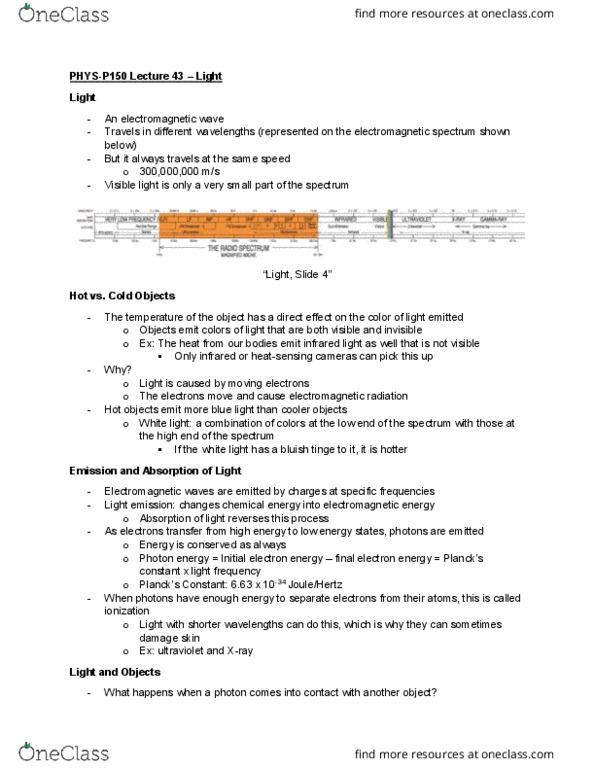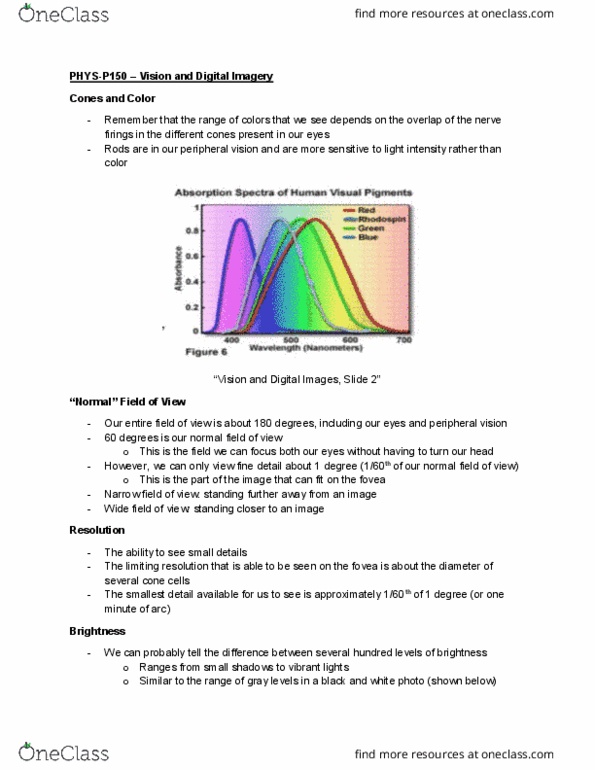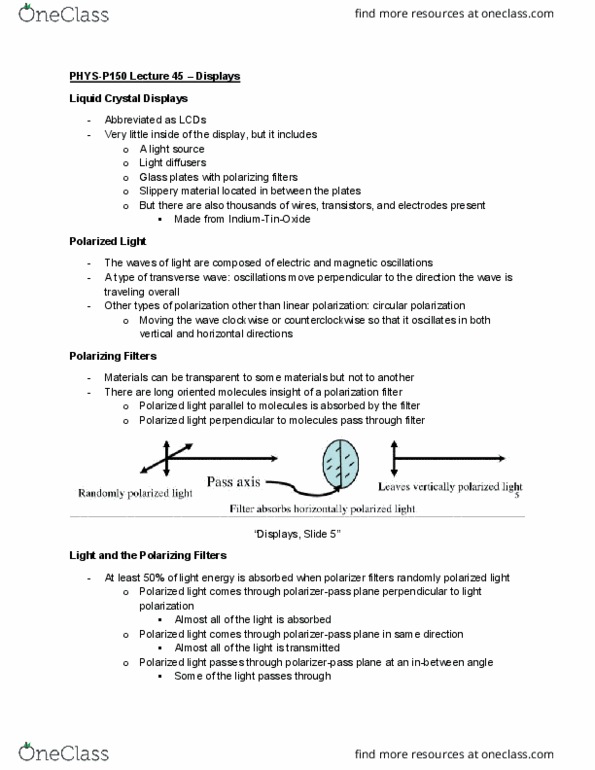PHYS-P 150 Lecture Notes - Lecture 44: Peripheral Vision
PHYS-P 150 verified notes
44/48View all
Document Summary
Remember that the range of colors that we see depends on the overlap of the nerve firings in the different cones present in our eyes. Rods are in our peripheral vision and are more sensitive to light intensity rather than color. Our entire field of view is about 180 degrees, including our eyes and peripheral vision. 60 degrees is our normal field of view: this is the field we can focus both our eyes without having to turn our head. However, we can only view fine detail about 1 degree (1/60th of our normal field of view: this is the part of the image that can fit on the fovea. Narrow field of view: standing further away from an image. Wide field of view: standing closer to an image. The limiting resolution that is able to be seen on the fovea is about the diameter of several cone cells.




